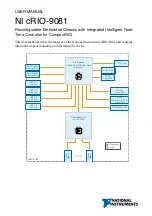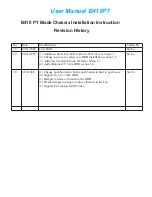
1-8
Cisco ASA Series CLI Configuration Guide
Chapter 1 Configuring Inspection of Basic Internet Protocols
DNS Inspection
Examples
The following example shows a how to define a DNS inspection policy map.
regex domain_example “example\.com”
regex domain_foo “foo\.com”
! define the domain names that the server serves
class-map type inspect regex match-any my_domains
match regex domain_example
match regex domain_foo
! Define a DNS map for query only
class-map type inspect dns match-all pub_server_map
match not header-flag QR
match question
match not domain-name regex class my_domains
policy-map type inspect dns new_dns_map
class pub_server_map
drop log
match header-flag RD
mask log
parameters
message-length maximum client auto
message-length maximum 512
dns-guard
protocol-enforcement
nat-rewrite
Configuring DNS Inspection
The default ASA configuration includes many default inspections on default ports applied globally on
all interfaces. A common method for customizing the inspection configuration is to customize the
default global policy. The steps in this section show how to edit the default global policy, but you can
alternatively create a new service policy as desired, for example, an interface-specific policy.
Detailed Steps
Command
Purpose
Step 1
class-map
name
Example:
hostname(config)# class-map dns_class_map
Creates a class map to identify the traffic for which you want to
apply the inspection.
In the default global policy, the inspection_default class map is a
special class map that includes default ports for all inspection
types (
match default-inspection-traffic
). If you are using this
class map in either the default policy or for a new service policy,
you can skip this step and the next step.
Step 2
match
parameter
Example:
hostname(config-cmap)# match access-list
dns
Specifies the traffic in the class map. See the
(Layer 3/4 Class Maps)” section on page 1-12
for more
information.
Summary of Contents for 5505 - ASA Firewall Edition Bundle
Page 28: ...Glossary GL 24 Cisco ASA Series CLI Configuration Guide ...
Page 61: ...P A R T 1 Getting Started with the ASA ...
Page 62: ......
Page 219: ...P A R T 2 Configuring High Availability and Scalability ...
Page 220: ......
Page 403: ...P A R T 2 Configuring Interfaces ...
Page 404: ......
Page 499: ...P A R T 2 Configuring Basic Settings ...
Page 500: ......
Page 533: ...P A R T 2 Configuring Objects and Access Lists ...
Page 534: ......
Page 601: ...P A R T 2 Configuring IP Routing ...
Page 602: ......
Page 745: ...P A R T 2 Configuring Network Address Translation ...
Page 746: ......
Page 845: ...P A R T 2 Configuring AAA Servers and the Local Database ...
Page 846: ......
Page 981: ...P A R T 2 Configuring Access Control ...
Page 982: ......
Page 1061: ...P A R T 2 Configuring Service Policies Using the Modular Policy Framework ...
Page 1062: ......
Page 1093: ...P A R T 2 Configuring Application Inspection ...
Page 1094: ......
Page 1191: ...P A R T 2 Configuring Unified Communications ...
Page 1192: ......
Page 1333: ...P A R T 2 Configuring Connection Settings and QoS ...
Page 1334: ......
Page 1379: ...P A R T 2 Configuring Advanced Network Protection ...
Page 1380: ......
Page 1475: ...P A R T 2 Configuring Modules ...
Page 1476: ......
Page 1549: ...P A R T 2 Configuring VPN ...
Page 1550: ......
Page 1965: ...P A R T 2 Configuring Logging SNMP and Smart Call Home ...
Page 1966: ......
Page 2059: ...P A R T 2 System Administration ...
Page 2060: ......
Page 2098: ...1 8 Cisco ASA Series CLI Configuration Guide Chapter 1 Troubleshooting Viewing the Coredump ...
Page 2099: ...P A R T 2 Reference ...
Page 2100: ......






































